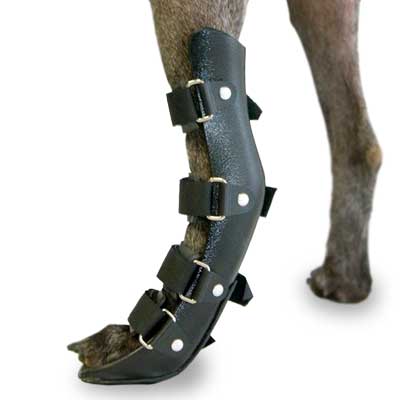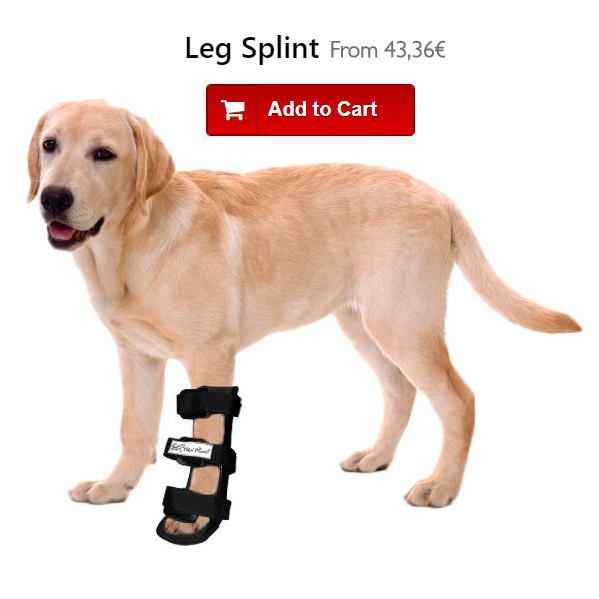A splint is a rigid support that immobilizes joints or fractures. Their use in human medicine is a very common practice for countless injuries and illnesses. In dogs, however, they are used infrequently for several reasons:
- There did not use to be splints available on the market similar to human ones.
- The splints that were used were either very simple products or homemade.
- Until recently even low quality commercial splints were hard to find.
- Due to poor material and lack of accessibility, veterinarians did not use them.
- In treatment protocols the use of splints and all their therapeutic possibilities were not described.
Quality splints for dogs only appeared on the market a few years ago, adapting to the dog’s anatomy, adjustable and available in different versions for the front and hind legs.
For orthopedic problems
One of the indications of use for splints in veterinary medicine with good results are malformations and instabilities of the carpal and tarsal joints. The splint maintains the position of the limb in the correct alignment so that it can work properly and support weight.
For trauma problems
They can be helpful in postsurgical processes as will as be used for conservative treatments. They are extremely useful for open wounds that must heal frequently and in limbs that must remain immobilized. The splints allow for a reusable immobilization that is much more effective, economical, hygienic and fast compared to the traditional dressings.
For neurological problems
Splints are the first option for typical cases of proprioceptive deficits or knuckling. We correct the limb’s posture and enable the dog to correctly support the plantar or palmar surface of the fingers. We can take the splint off at night and wash it as often as needed. Setting it is fast and easy.
Canine splints are one of the most underused therapeutic possibilities in small animals, ignorance of the existence of this possibility is effectively subtracting from the treatment of various pathologies in our pets.
If you need advice regarding splints or wish to find out if they could be useful for your animal's condition, contact us at [email protected]



